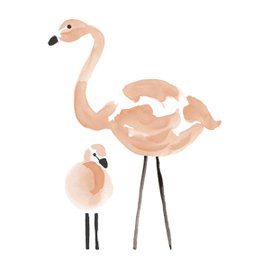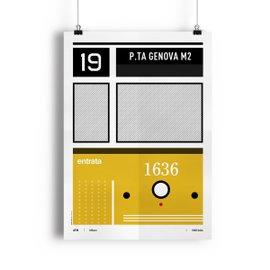Previous
Memory techniques


Your dream house is one step away from you.
Subscribe to our newsletter and get 10% off orders of at least 100€!
Enjoy it and don’t miss out on our offers and updates.


We must admit that not many people appreciate Milan. It’s grey, some say. It’s cold and rainy, others argue. The people are always in a hurry, many complain. However, on the streets of Milan, there are still people who sincerely love the city – and appreciate it! – and they often respond to the complaints with a “maybe”, not too convinced by the criticism of the cynics.
Six little-known and fascinating Milan sights will convince even the most sceptical among the city’s new inhabitants, as well as those who’ve always had them in plain sight but have never known where to look. Because, between you and me: Milan is a great city if you cast your eyes in the right direction.
On one side an Italian businessman – the inventor of the Mio cheese – on the other side flamingos, free in the middle of an urban garden. If you are confused, thinking that the two things cannot possibly be connected to each other, think again: We’re talking about Villa Invernizzi in corso Venezia 32. To reach the villa, you will need to go through via Cappuccini, a quiet and magical corner, until you can admire the garden that is home to unusual and beautiful pink-feathered birds.
Romeo Invernizzi – a pioneer of the flamingo craze – transported them from South America to Milan in 1970. Since then, it seems that they have perfectly adapted and have no intention of flying away. At least someone likes Milan.
Take the green underground to Porta Genova, follow via Vigevano and then make your way to the canal, and take your time, because it’s quite special, especially at about five in the afternoon on a warm day. You’ll see an alley in the distance: a mill, a stream, frogs, snails, water lilies, and a somewhat salty smell. Vico dei Lavandai was where the Milanese women would wash their clothes in the past, and it still stands there today, completely unchanged. If you stop and put your imagination to work, you can still see them at it.
Don’t be shy, and do a little exploring. Once you arrive at number 6, you’ll find a huge wooden door with a blue ceramic sign, with a very homespun style. Through the doors there are a number of galleries that exhibit primarily watercolour paintings, painters and craftsmen of yesteryear. Perhaps you could even spot a “for sale” or “for rent” sign walking through Vico: Look at it without regret, there’s no penalty for dreaming.
Imagine being invited to dinner by a friend, and once you get to his building, instead of ringing the bell, you shout your name into a big ear. Madness? Absolutely, that is, until you come across Palazzo Sola Busca in Via Serbelloni 10 and its famous bronze ear. In addition to being one of the first intercoms ever in the city, it also undoubtedly gets the award for “most original”.
The artist behind it is sculptor Adolfo Wildt, who was able to further enhance the beautiful liberty building, nicknamed Ca’ de l’oreggia. The ear-phone has recently been retired, but, at one time, visitors used it to announce themselves to the doorman. Pure genius.



If you happen to be walking near the University of Milan, head towards Santo Stefano Square. You’ll see a majestic and imposing church, from which the square gets its name. Keep on moving: Head to the right and go inside the small church, which is so tiny you might even miss it. Now stop and let the awe sink in: Skulls and leg bones cover and decorate the walls of the Church of San Bernardino alle Ossa.
Who came up with the idea to work in these Rococo skull decorations? The Disciplini, a religious cult dedicated to the dead, in the mid 1600s, following the collapse of the two churches, decided to rebuild one of the two with a quirky and original style. Legends – more on the parochial side - say that the bones belong to Christian martyrs, led by Saint Ambrose, who died in battle defending the city. The truth, at least the simplest version of it, is that they’re the remains of the dead from the hospital that’s right around the corner. Regardless, its awe-inspiring display will make you catch your breath.
Milan is by definition the city of Madonnina, the beautiful statue that sits atop the Duomo church that overlooks and protects the city. If you ask any Milanese person – or even the adopted Milanese! – they’ll proudly break into the famous namesake song. But if you ask these very same people what the Duomo looks like on the inside, they’ll tell you they can’t remember because the last time they visited was in seventh grade on a school trip.
The symbol of the city of Milan flaunts various and surprising trivia. For starters, among the countless statues that decorate the cathedral, there are many rather unusual ones. It is said that the sculptors, after 700 years of work, were short of ideas and were gladly accepting tips. The selection ranges from Milanese spires, which ended with Napoleon, to two boxer duos, countless cats, dogs and other animals and… Mussolini. To see them you have to take the stairs to the roof (or use the elevator, no worries) and when you get outside, turn left, look to the northwest and look down at the double-headed pinnacle.
Do you think that virtual reality is a twenty-first century discovery? You’re wrong. If you happen to stroll on through Via Torino, make a little detour and check out the small and hidden Church of Saint Satyrus, which is right after Via Sperorari. You’ll stumble upon an apse; for those who didn’t pay much attention in high school art class, this is the part behind the altar. It looks nine meters deep, but you know what? It actually only measures 95 centimetres in total.
Magic? No, it’s just a very effective play on perspective. It was designed in 1480 by none other than Donato Bramante, while he was looking for an original solution to build an apse for the little church of Saint Satyrus, despite limited space where it was crunched by a road behind the church. Now that’s efficient.


Hu2
Antoine Tesquier Tedeschi
Home Accessories
Gifts
Lilipinso
Lucie Bellion
Kids
Kids Rock Express Delivery
Lettera G
Alessandro Marelli
Furniture
Maurizio Cattelan e Pierpaolo Ferrari
The best of Design
Seletti
ilKiosco
Susanna Castelli

 Back to
Back to
Size*
Quantity*




